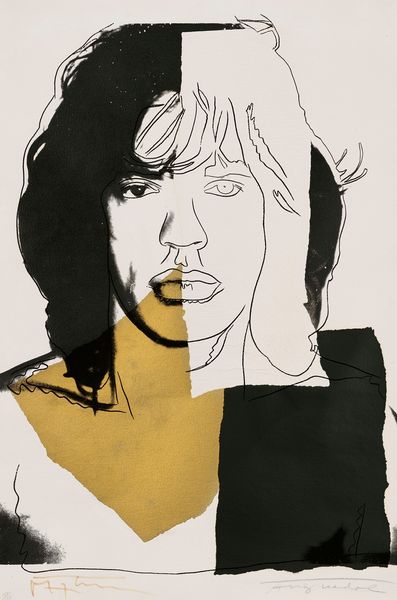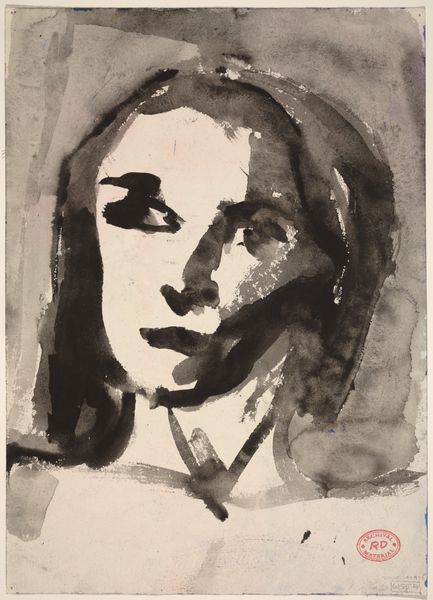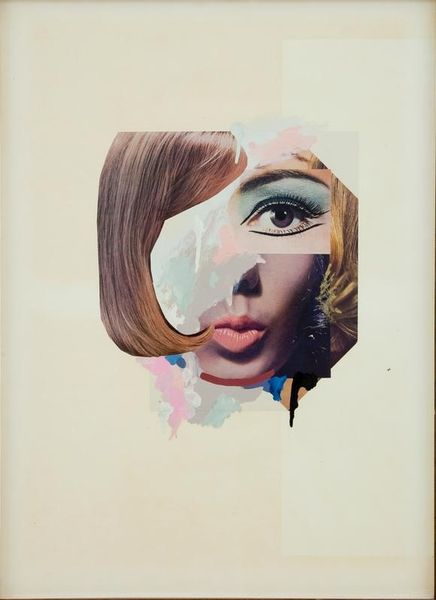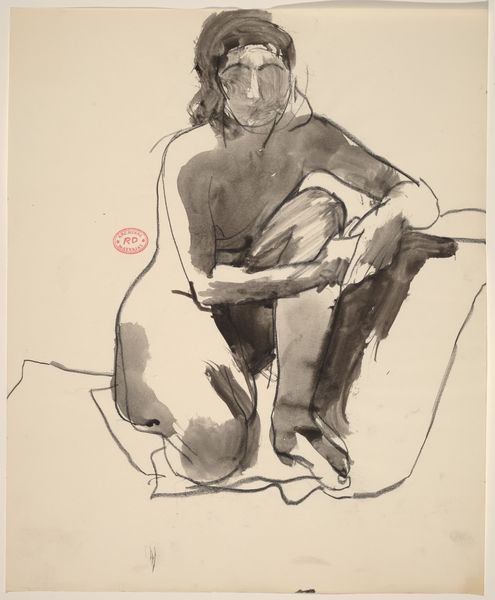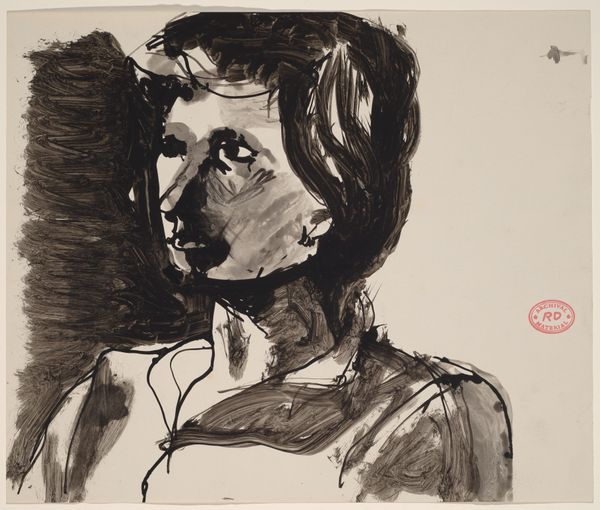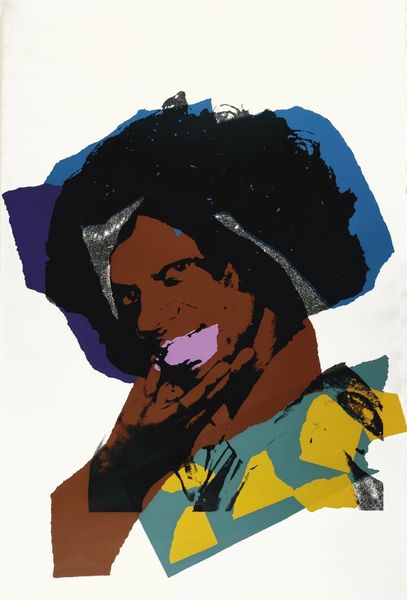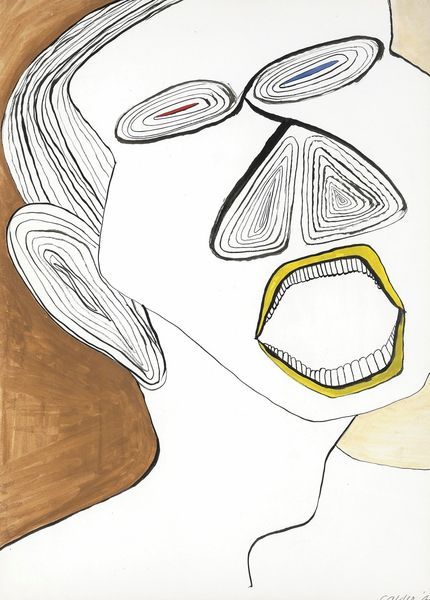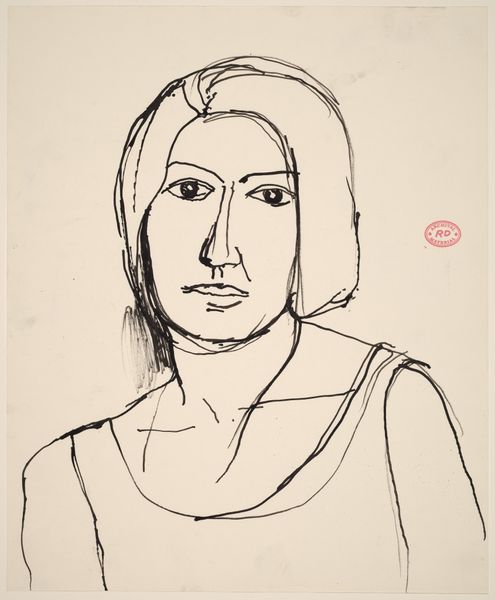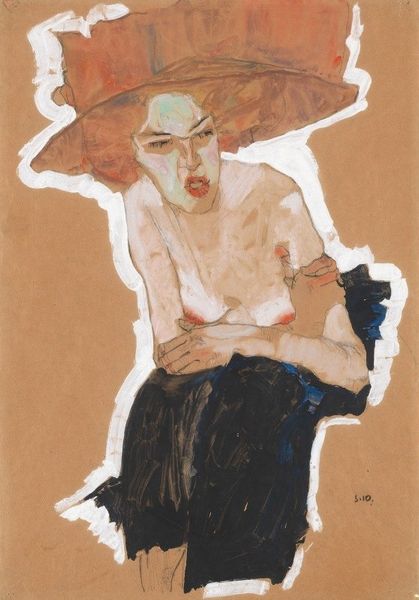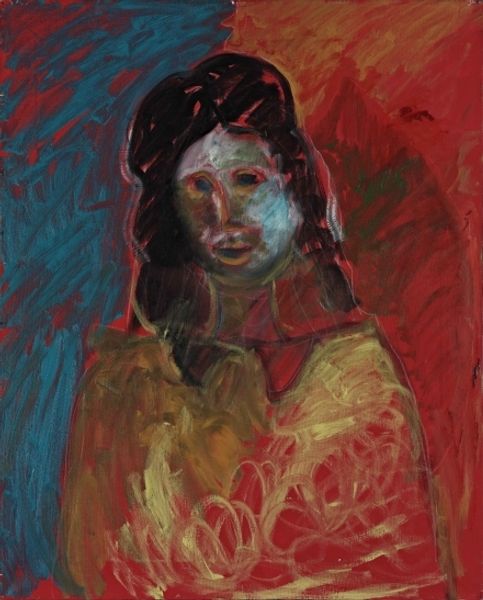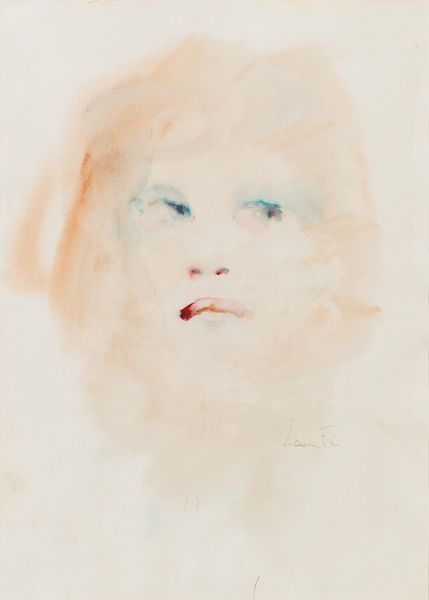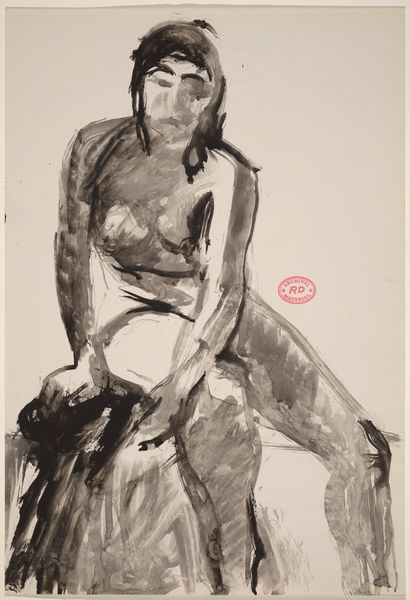
Copyright: Modern Artists: Artvee
Editor: Here we have Andy Warhol's "Mick Jagger," a mixed-media screenprint from 1975. I’m really struck by the somewhat crude application of color—it feels almost like a commentary on mass production itself. What can you tell me about it? Curator: I think you're onto something. Warhol was incredibly interested in the means of production. In this Jagger portrait, consider how the screen printing process mirrors the mass production of celebrity. How do you think using acrylic paint adds to the dialogue of "high" versus "low" art forms? Editor: It definitely blurs those lines, doesn’t it? Acrylic, commonly used in commercial art, elevates the everyday while also democratizing portraiture. Do the colors also speak to the production process? Curator: Absolutely. The stark contrasts and vibrant hues emphasize the artificiality inherent in both celebrity and mass production. Think about Warhol’s studio, “The Factory”, itself – an active workspace that challenged the preciousness usually surrounding artistic creation. What materials stand out most to you in terms of cultural impact? Editor: I keep coming back to the screenprint itself. The layers and the slightly misaligned registration – it highlights the human element in supposedly mechanical reproduction, almost like planned obsolescence in art. It also seems he’s challenging our traditional idea of what a portrait can be. Curator: Precisely. And that challenges us to think about how celebrity itself is manufactured and consumed. This portrait acts as a product of that system as well as a comment on it. Editor: So, the value lies not just in the image, but in understanding the process behind it and its cultural implications. I’ll never look at a Warhol the same way! Curator: Indeed! By understanding its process and materials, we start to see not just a picture of Mick Jagger but a statement on consumer culture.
Comments
No comments
Be the first to comment and join the conversation on the ultimate creative platform.
